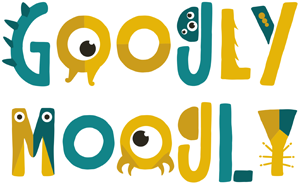Pee-wee Herman and the Power of Play
Paul Reubens, creator and performer behind Pee-wee Herman, built an entire universe out of imagination, rebellion, and joy. Pee-wee Herman wasn’t just a character—it was a fully realized mindset rooted in wonder, mischief, and creative freedom. His work shows how tapping into playfulness can build connection, disarm audiences, and create something truly original.
“I’ve always felt like a kid… I’ve never had any problem tapping into my childhood, and my kid side.”
How He Played:
- Spontaneity as a Superpower: Pee-wee began as an improvisation—an unexpected creation that resonated because it felt honest and free.
- Subversion through Whimsy: Pee-wee’s Playhouse challenged norms with color, chaos, and kindness. It felt radical—and it was.
- Visual Vocabulary of Play: Puppets, talking furniture, secret words—Reubens made childhood logic feel brilliant and brave.
The Playhouse Collaboration Loop
A non-linear model for creative collaboration inspired by the joyful chaos of Pee-wee’s Playhouse
Why Collaboration Needs a Playhouse

Creative work isn’t linear. It’s unpredictable, vibrant, and sometimes absurd — just like Pee-wee’s Playhouse. Inside that technicolor world, chaos and structure dance together. Personalities clash and complement. Objects speak. Rituals repeat. And at the center of it all is a host who makes space for everyone to contribute.
The Playhouse Collaboration Loop takes inspiration from that ecosystem to help teams:
-
Foster meaningful collaboration without forcing conformity
-
Build flexible roles that value personality and purpose
-
Balance surprise with rhythm, structure with spontaneity
-
Design a work culture that feels alive, not transactional
This model isn’t a step-by-step process — it’s a loop. One that values continuous input, expression, feedback, and action.
The Four Parts of the Playhouse Loop
1. The Host
Structure & Space-Holding
In the Playhouse: Pee-wee
In Your Team: The facilitator, creative lead, or project owner
What They Do:
-
Set the tone for playful productivity
-
Guide energy without micromanaging
-
Make space for personalities to shine
-
Use boundaries, rituals, and humor to create structure
At Work:
-
Project managers who keep chaos moving without killing the fun
-
Meeting leaders who curate rather than dominate
-
Workshop hosts who make teams feel safe taking creative risks
2. The Characters
Expression & Energy
In the Playhouse: Miss Yvonne, Cowboy Curtis, Randy
In Your Team: Every collaborator with a distinct work style
What They Do:
-
Bring their full selves: quiet or loud, serious or silly
-
Contribute sparks of insight, resistance, joy, and unpredictability
-
Add necessary tension, emotion, and personality to group dynamics
At Work:
-
Individuals valued for how they think, not just what they produce
-
Role design that supports expressive differences
-
Culture that celebrates “expressive weirdos” and grounded thinkers alike
3. The Rituals
Cohesion & Meaning
In the Playhouse: Word of the Day, Mail Time, Penny Cartoons
In Your Team: Recurring culture moments, shared language, group rhythms
What They Do:
-
Create emotional continuity in a fast-paced world
-
Reinforce shared identity and belonging
-
Provide structure while leaving room for surprise
At Work:
-
Weekly rituals that anchor distributed teams
-
In-jokes, metaphors, and cultural “stickers”
-
Micro-traditions like Monday prompts, themed retros, or “Zoom Weird Wednesdays”
4. The Objects
Action & Enablement
In the Playhouse: Chairry, Magic Screen, Conky, Globey
In Your Team: Docs, dashboards, platforms, whiteboards — anything with function and vibe
What They Do:
-
Enable action — while adding personality and joy
-
Come to life when teams treat them with intentionality
-
Reflect the culture that surrounds them
At Work:
-
Name your folders and docs playfully
-
Design systems that feel like collaborators, not chores
-
Use interface metaphors to spark delight and creativity
The Loop in Motion
This isn’t a hierarchy. It’s not a timeline. It’s a loop — where each piece feeds the others:
-
The Host sets the room
-
The Characters fill it with life
-
The Rituals bring rhythm and coherence
-
The Objects give ideas a place to land and evolve
-
And then it begins again
Collaboration isn’t about control — it’s about creating a living system that supports flow, friction, and transformation.
Build Your Own Playhouse
Want to apply this with your team?
You don’t need cardboard walls or talking chairs — just:
-
A clear Host to hold space
-
A mix of Characters who bring personality
-
Rituals that spark and anchor your culture
-
Objects that make action fun, not frustrating
Try mapping your team using The Playhouse Collaboration Loop.
Ask: Who’s the Host? Who’s the Wildcard Character? What rituals already exist? What tools have become invisible or misused?
You don’t need linearity. You need a loop that supports play, trust, and action.
